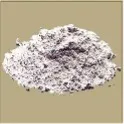Grade: Potash White Potash Pink
One of the most important materials for medium and high temperature ceramic glazes. It supplies potash, alumina, silica and often some magnesia and calcia to the glaze. Potash feldspar are not usually as pure and white as soda spars. A feldspar is called ‘potash’ if there is more sodium than potassium. There are no real deposits that have the theoretical 17% K2O, none are even close to this, they have a mix of potassium and sodium.
Glazes high in feldspar (35% or more) are likely to produce crazing problems. ‘Flux saturated’ glazes with more than 50% feldspar may be unbalanced and lack adequate glass former or alumina
Grade: Sodium used in Ceramics
Soda Feldspar is generally a clean white mineral which sources sodium, alumina and silica along with some potassium and calcium. Albite mineral from which soda feldspar is derived is often tends to be white in appearance compared with the pinkish hue of orthoclase mineral from which potash feldspar is ground. It begins melting around 800C.
In many cases soda and potash feldspar are interchangeable in glaze recipes. However, some differences will be apparent. For example, slightly different color responses will be encountered (i.e. cobalt tends toward purple copper toward blue with soda spar). Sometimes colors will be brighter with soda feldspar. In addition, soda spar has a higher coefficient of expansion and melts earlier and has a shorter range before it begins to volatilize.
Because sodium has the highest expansion of all oxides and because soda feldspar is high in this oxide, glazes with a lot of soda spar tend to craze. Thus, if any glaze recipe has more than 30% soda feldspar, it is wise to test carefully to assure the glaze is not in tension.
Chemical Analysis of Feldspar
| Parameter | Composition |
|---|---|
| SiO2 | 66.00% |
| CaO | 0.38% |
| MgO | 0.18% |
| Fe2O3 | 0.10% |
| Al2O3 | 18.40% |
| LOI | 0.5% |
| Na2O | 2.90% |
| K2O | 11.32% |
| L Value | 56.6% |
| A Value | 0.8 % |
| B Value | 5.6% |
| Shrinkage | 13.10% |
| Firing after Whiteness | 29.8% |

